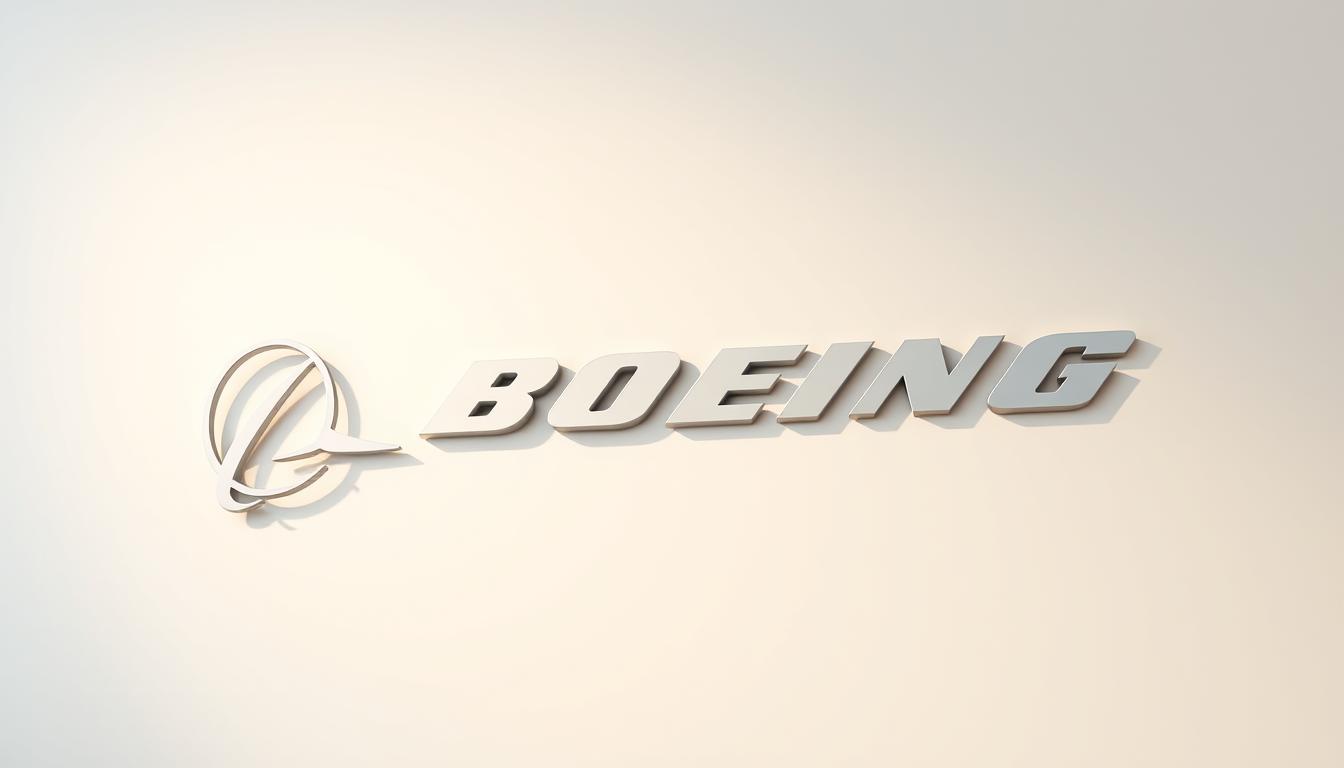
Discover the Iconic Boeing Logo: Meaning and Evolution
The Boeing logo company has been a pioneer in aerospace for over a century, with its visual identity reflecting key milestones in aviation history. From its early days in 1916, the brand’s symbols have evolved alongside technological advancements and cultural influences.

Originally, the design featured a bird-and-arrow motif, symbolizing speed and precision. By the 1930s, Native American artistry inspired a bold totem pole aesthetic. Today’s streamlined emblem merges elements from the 1997 merger with McDonnell Douglas.
Key Takeaways
- The brand’s visual identity has transformed over 100+ years.
- Early logos incorporated nature-inspired themes like birds and arrows.
- Cultural influences shaped distinct eras of the emblem’s history.
- Modern iterations balance heritage with corporate synergy.
- Color and typography choices carry strategic meaning.
The Evolution of the Boeing Logo
From avian motifs to geometric precision, each era left its mark on the company’s insignia. The brand’s visual identity mirrors aviation milestones, with designs shifting alongside technological and cultural trends.

The Genesis: 1920s-1930s
Early prototypes tested two *distinct concepts*: a flying bird illustration and abstract wing shapes. By the 1930s, a vertical “BOEING” totem emerged, featuring a winged letter “O” inspired by Native American artistry.
Mid-Century Modernization: 1940s-1960s
The 1940s introduced a dynamic script font, with a star-adorned “i” symbolizing post-war optimism. In the 1960s, designers Bob Laly and Kith Kinsmen created the Stratotype font, later adopted as an aerospace standard.
The Merger Era: 1997 Redesign
Rick Eiber unified legacy elements after the McDonnell Douglas merger. The new emblem blended Douglas’ blue sphere/ring motif with italicized text, representing innovation and corporate synergy.
| Era | Key Features | Designers |
|---|---|---|
| 1920s-1930s | Bird/wing motifs, totem typography | Unknown |
| 1940s-1960s | Script font, Stratotype | Bob Laly, Kith Kinsmen |
| 1997 | Sphere/ring, italic text | Rick Eiber |
Design Elements of the Boeing Logo
Hidden meanings lie within the shapes and colors of this iconic insignia. Each element reflects aviation heritage, from Native American artistry to modern geometry. Below, we decode the visual language behind the emblem.
Symbolism: Wings, Arrows, and the Totem Influence
Early designs used arrows to symbolize speed and direction. The 1930s totem-inspired lettering honored indigenous craftsmanship, with the “O” resembling wings. These motifs created a sense of motion, mirroring flight progress.

Font: The Custom Stratotype Typeface
The proprietary Stratotype font features a 22.5° rightward tilt, mimicking an aircraft’s ascent angle. This design choice reinforces the brand’s engineering precision. Its clean lines ensure readability across media.
Color Palette: Blue, Black, and Corporate Identity
Deep blue (#0039A6) dominates the current image, representing trust and technology. The shift from black to blue in 1997 signaled modernization. Geometric shapes enhance the illusion of forward movement.
| Element | Specification | Purpose |
|---|---|---|
| Stratotype Tilt | 22.5° | Mimics aircraft climb |
| Primary Color | #0039A6 | Trust/innovation |
| SVG Dimensions | 512×119px | Scalability |
Boeing’s Logo and Corporate Branding
Aerospace breakthroughs have consistently shaped the visual identity of this industry giant. The boeing company emblem isn’t just a mark—it’s a timeline of engineering feats and cultural shifts. Each redesign reflects technological leaps, from jetliners to space exploration.
How the Logo Reflects Aerospace Innovation
The 707 jetliner era introduced sleek typography, mirroring mid-century speed. Later, the 747 Jumbo Jet’s dominance inspired bolder lines. NASA’s Saturn V rocket collaborations even influenced the emblem’s geometric precision, symbolizing boundless ambition.

Post-9/11, the shift to calming blue hues reassured global audiences. Meanwhile, the 787 Dreamliner’s composite materials sparked a minimalist concept in 1997. Even the Everett factory’s vast 98.7-acre footprint guided scalable SVG file designs.
Cultural and Historical Influences on Design
Early motifs drew from Native American artistry, like winged totems. Cold War secrecy led to streamlined, secure branding. The 1970s recession’s 70,000 layoffs prompted a shift toward resilience in visual identity.
| Influence | Design Response |
|---|---|
| NASA Collaborations | Geometric precision |
| Eco-Friendly Initiatives | Simplified emblem |
| Digital Age | Optimized SVG files |
Today’s logo boeing company balances heritage with forward motion. It’s a testament to how aviation history and innovation coexist in every curve.
Conclusion
Over a century of aviation progress is etched into the brand’s visual identity. From avian motifs to geometric precision, each redesign reflects technological leaps, securing 66% of the commercial market.
The current boeing logo, launched in 1997, faces new challenges—safety rebranding and digital adaptations. AR/VR could redefine the Stratotype font, while supersonic travel may inspire fresh symbolism.
Rooted in heritage yet soaring toward innovation, the boeing company emblem embodies a vision: to connect, protect, and explore. Its evolution never truly ends—it accelerates.
Explore the Iconic logo Ford Motor Company
FAQ
What does the Boeing logo symbolize?
The design represents aerospace innovation, with wings and arrows symbolizing movement, speed, and progress. Early versions drew inspiration from Native American totem art.
When was the current Boeing logo introduced?
The streamlined emblem debuted in 1997 after the merger with McDonnell Douglas, replacing the previous script-based design.
Why did the company shift from a script to a wordmark?
The change reflected modernization and a stronger corporate identity, aligning with its global leadership in aviation and technology.
What font is used in the Boeing logo?
A custom typeface called Stratotype was developed for the brand, emphasizing clarity and professionalism.
How has the color palette evolved over time?
Early designs used bold black and white contrasts. The current version features deep blue, symbolizing trust and reliability in the aerospace industry.
Did the McDonnell Douglas merger influence the logo redesign?
Yes, the 1997 update merged visual elements from both companies, creating a unified identity while preserving Boeing’s heritage.
